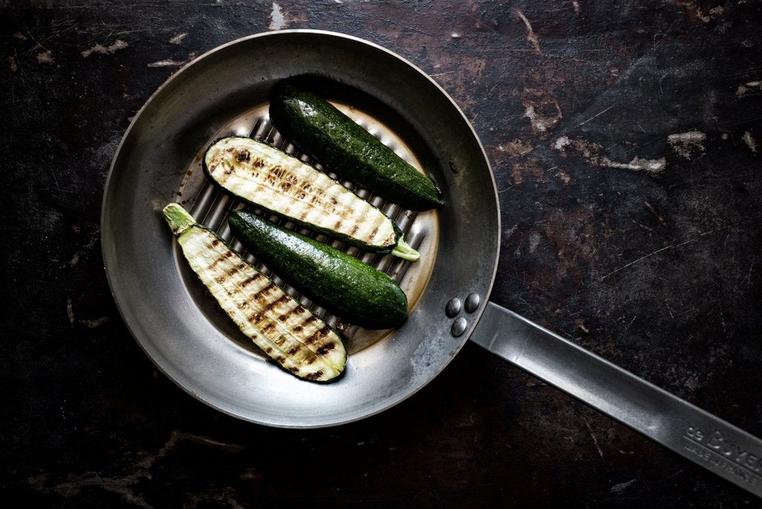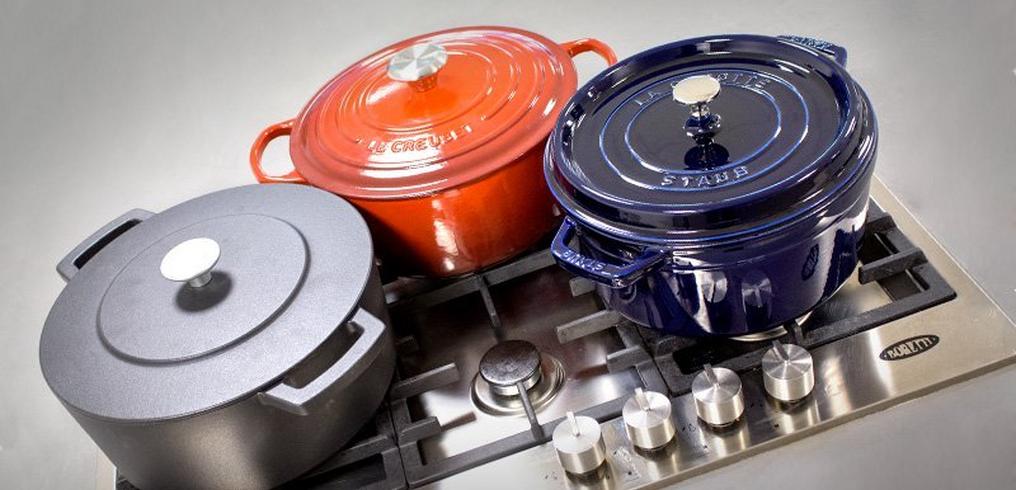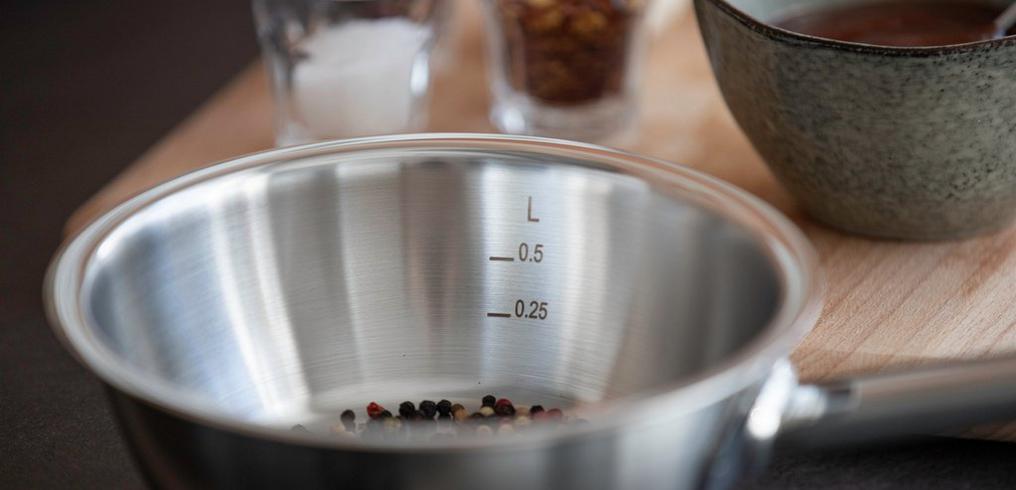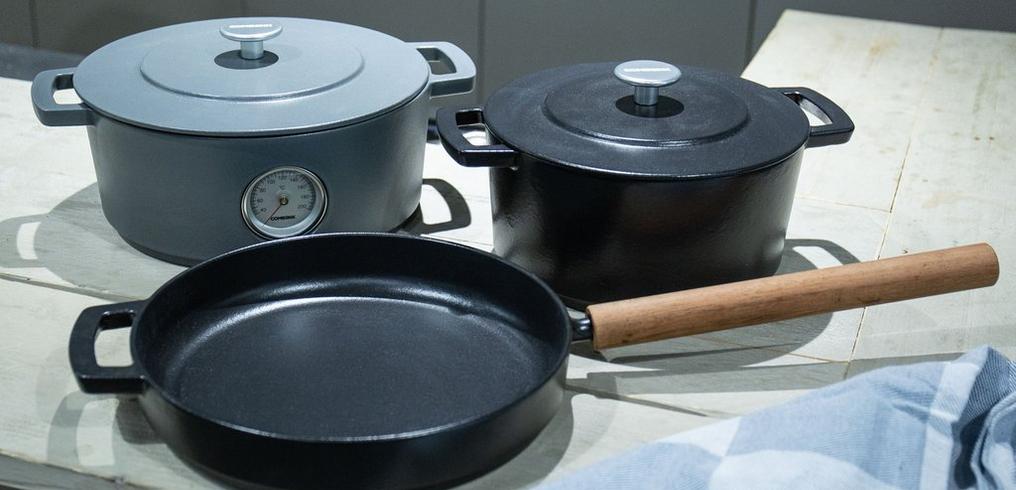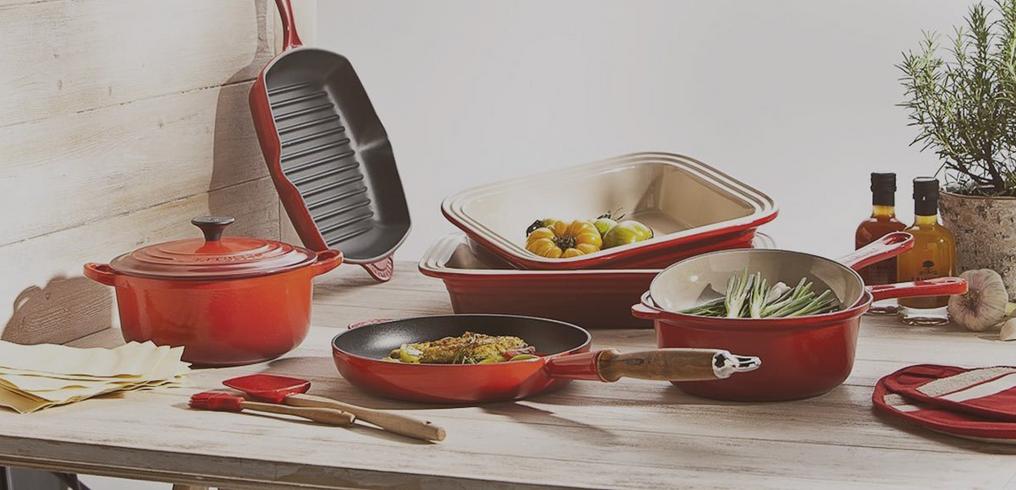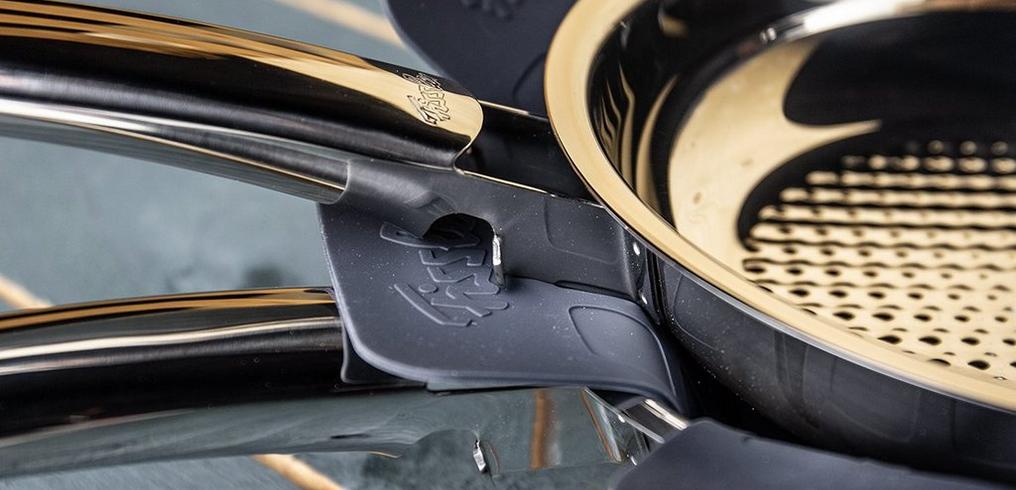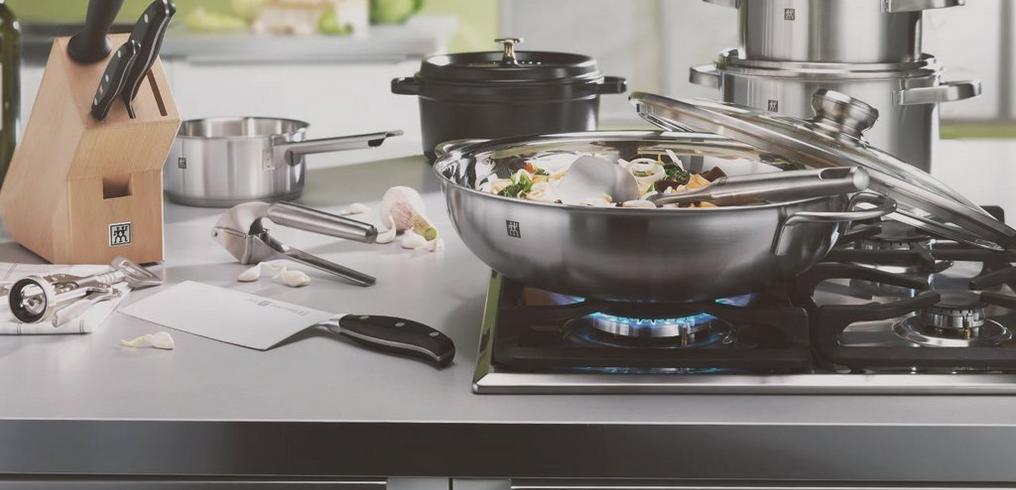Good pans: what is a good pan?
A proper set of pans is indispensable in any kitchen. However, not all pans are the same. There are significant differences between each of them. Think of the price for instance. The difference in price is, amongst other things, caused by the choice of material. In addition, per brand there are differences in construction, heat conduction, and quality. A pan which will bend easily, and the deterioration of the heat conduction are two important qualities which will make a pan worthless.
A proper set of pans does not a chef make, they will, however, steer you in the right direction! We will give you all the ins and outs on purchasing the most important tool in your kitchen. The right basic elements such as the bottom, lid, and handles make cooking even more enjoyable.
The importance of the right materials
When purchasing a pan you need to take the materials that have been used into account. After all, the material of the pan determines how you use it, clean it, and maintain it. The most recurring materials are cast iron, aluminium, and stainless steel. Second-rate pans are made using a straight sheet of metal which is bended. A certain amount of pressure always rests on bent metal. As a result, quick changes in temperature or changing the heat source can make the pan bend on its own. Soon you will be left with a pan you can throw out, especially when you cook electrically. In addition, metal has the tendency to rust which increases your chances of stains and will make it impossible for you to clean your pan by using the dishwasher.
Materials used
Decent pans are comprised of materials that do not bend and are not that susceptible to damages such as rust and stains. A fine example is aluminium because it is low in weight. It is relatively cheap and easily to bend and cast. In addition, aluminium is a proper heat conductor. However, this material does have its flaws. For instance, it isn’t dishwasher proof, and has a hard time when it comes into contact with acids and salt because both could leave white stains. For this reason aluminium is encased with a layer of a different material, usually stainless steel. We call this a multiple layer construction. For it, it is key that the edges of the pan are sealed off because otherwise moisture might still reach the aluminium layer causing the edges to rust.
Another advantage of stainless steel is that it is a type of material that can be easily cleaned. You can put it in the dishwasher or clean it with a sponge and some abrasive, it doesn’t really matter because when it’s clean, it’s clean! Why not leave it out for a night after a wonderful meal, no harm done! Simply clean the pan the next day. Great examples are the pans made by Fissler en Spring.
Even heat conduction
The result of your dish partially depends on the pan’s right heat conduction. The more evenly the heat is distributed the more control you will have during the cooking process. If a pan evenly distributes heat is something you can easily test with the famous flour-test. Cover the bottom of your pan with an equal layer of flour and place it on your stove. A pan with a poor heat conduction system will turn the flour brown in certain spots. The right pan, however, will equally distribute the heat ensuring that the flour will turn brown over the entire surface of the pan.
Copper is a great conductor but, unfortunately, very pricy and difficult to maintain. A great alternative is aluminium because it is a great heat conductor, more affordable, and very light-weight. As a result, most modern pans are today equipped with a aluminium core. When you own a second-rate pan the aluminium will only be added to the bottom of the pan. A quality pan, however, has aluminium added to its sides which ensures an optimal absorption, division, and storage of heat from the bottom to the top of the pan. This not only guarantees an excellent cooking or baking process, but it also ensures that little of the heat is lost. As such you will be cooking more economically.
The right bottom
’The thicker the bottom, the better the pan’. This is, unfortunately, a myth. A thick bottom retains the heat much longer, sometimes even too long. It basically comes down to this: you bring the contents of the pan to a boil, after which you turn down the heat, and what happens? Nothing. The contents still burn because the bottom maintains the high temperature you used before. This could prove to be difficult when you are preparing sauces. The pans from our range are all enhanced with a bottom that has exact right thickness in order to, when using it properly, prevent burning. So, as a rule, always use the right pan for the right purpose.
The lid
A lid that closes properly preserves the heat and keeps the moisture inside the pan. This preserves the flavours and will help you cook more economically. Some people prefer a heavy lid which firmly seals off the pan. Others, however, prefer a glass lid in order to keep an eye on the cooking process. There are also lids that are slightly bent, or have dents in the lid which will release any risen moisture from the top of the lid to take care of an even distribution of the moisture. Furthermore, it will prevent you from losing any liquids in the process.
The right handles
The importance of the right handles is often overlooked. The handles ensure that you are able to firmly take hold of the pan and move it to wherever you like. Experience has taught us that when you are dealing with a heavier pan you like to use two handles in order to carry it around and maintain its stability. The materials used to create the handles are essential with regards to the durability and usage.
Plastic handles are cheap and frequently used. The main advantage of plastic handles is that they do not conduct the heat and, as such, do not become hot when you are cooking. You can take hold of the handles without using pot-holders. However, plastic handles cannot handle heat very well. This means you cannot use them in the oven. In addition, when you misplace your pan on your stove the handles can get damaged due to the heat. Not to mention that the handles can lose their colour when placed in the dishwasher. For this reason we have decided not to sell pans with plastic handles.
Metal handles are, generally speaking, welded or riveted to the pan. The main advantage of this technique is that the handles are firmly attached to the pan itself and cannot easily come off. In addition, they can be used in the oven or placed in the dishwasher! A disadvantage could be that the handles can get very hot which makes it impossible to take hold of the handles without using pot-holders. If you find this a deal breaker why not choose the so-called cold handles? These handles will never get hot which enables you to always safely touch them without burning your hands.
You get what you pay for
As a home-chef you do not necessarily have to purchase professional pans right away. The choice primarily depends on what you are looking for in terms of quality and the durability of a pan. A good pan has a lot of great advantages: the quality is maintained, the material is less susceptible to damages, the pan has parts that won’t fall off quickly, it is more durable, and easier to clean and maintain. For this reason we advise you to spend a little more on a great set of pans which will last much longer. Do not settle for less because you simply get what you pay for.
Looking to become inspired when choosing the right pan? Please take a look at our top-10 popular pans.
?%24center=center&%24poi=poi&%24product-image%24=&fmt=auto&poi=%7B%24this.metadata.pointOfInterest.x%7D%2C%7B%24this.metadata.pointOfInterest.y%7D%2C%7B%24this.metadata.pointOfInterest.w%7D%2C%7B%24this.metadata.pointOfInterest.h%7D&scaleFit=%7B%28%24this.metadata.pointOfInterest%29%3F%24poi%3A%24center%7D&sm=c&w=762)
